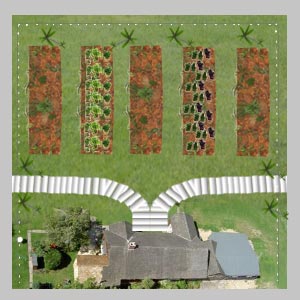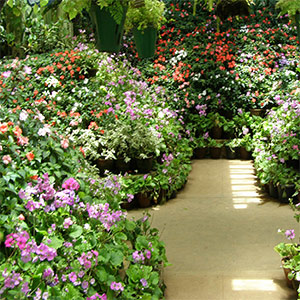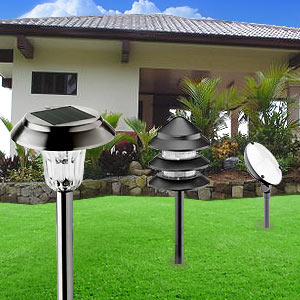Vegetable Garden Layout

Sprawling acres of land or just a deck or patio or as small as 8`x4` free space - you can fulfill your vegetable gardening desires. Sowing vegetable seeds and planting vegetable seedlings is indeed a delightful and rewarding experience. Besides, with no usage of pesticides, chemicals or any artificial agent, you are doubly sure that your entire family eats fresh, organic, tasty, healthy, nutritious vegetables.
Here is a complete and practical guide to having your own vegetable garden. Right from designing vegetable garden layout to the advantages of having a raised bed garden layout, learn the key to success in indoor vegetable gardening.
Vegetable garden
Why have a vegetable garden? Reasons are aplenty, but enthusiastic and successful big and small home vegetable gardeners across the globe state top five reasons.
- You derive health benefits eating fresh vegetables.
- You relish real, original flavor of vegetables.
- You control (minimum or nil) usage of pesticides and fertilizers.
- You can save money on food bill and gasoline bill.
- It`s a good form of physical as well as mental exercise.
Vegetable garden layout
Basic preparation for vegetable garden
Find what exactly you expect from your vegetable garden. For best possible growth, it is important to assess the climate, facilities and means at your disposal. Check if the garden area is well drained or water logged at places. Take some time off and assess the possibility of interference from pests. Look into the types of garden tools you have including a hose or watering can and items you need to procure.
Plan vegetable garden site
The step involves determining the vegetable garden layout. Draw a layout on paper. Start the process by assessing the amount of space available. Large gardens demand more time and effort in maintenance. Access to plants in small gardens is easier. Further, the size of the garden will help determine the different types of vegetables you can grow and how many plants you can grow. Proceed to find if the site receives full sunlight. Avoid areas that are too shady.
Take a day or two to assess if the site receives at least six hours of full sun. This is most important for the food crops to mature properly. Take sample of soil to check fertility level. Ensure the site enjoys good air movement. However, windy areas can be deterrent as they may break the plants. Take into account water supply facility to the spot. Make the path clear so that it is feasible to monitor plant pests and provide over-all care for the garden.
Prepare vegetable garden soil
The base of a successful vegetable garden is its deep, fertile, well-drained soil. Good soil provides a firm ground for seeds to germinate well and subsequently provide good yield. If the land has been earlier used for cultivation, the soil is prepared and requires hardly any work. On the other hand, if the area is being used for cultivation for the first time, the work for soil preparation should commence the preceding fall. Plow into the soil large amount of organic material and allow it to compost over the winter.
To check pH in soil, procure an inexpensive soil testing kit from a local gardener and self-test soil or take sample and send to a nearest commercial lab. Soil pH or soil reaction is an indication of the acidity or alkalinity of soil. Most vegetable garden crops do well with a soil pH of 5.5 and 7.5. The sample tests provide details about the pH level and points out existing deficiencies of the necessary nutrients most needed for successful plant growth.
The lab report will provide recommendations regarding the amount and kind of fertilizer to be added for a good harvest. Follow the recommendations to ensure that vegetable garden plants get right nutrient levels. Also, feel the soil and remove rocks, weeds and weed roots. To check if the soil is ready for work, take some soil in hand and check if it crumbles. If the pH soil test reports indicate the soil is excessively alkaline, it is best to build a raised bed.
Plants for vegetable garden
It is time to consider which vegetables to grow. You would obviously want to grow what you and your family prefer. To ensure success, instead of randomly selecting vegetables, find out which vegetables grow well in your area. This is termed as understanding and estimating the planting zone. With this you can ensure that you are starting at the right time, calculate the length of your local growing season and accordingly select the vegetables. You can also make a visit to the nearby nursery to find popular vegetable varieties and their preferred planting seasons. In general, it is easier to grow lettuce, radish, beetroots, carrots, potatoes and summer squash vegetables.
Planting vegetable garden
You have reached the planting stage. With the help of stakes, demarcate different rows for planting starter plants or planting seeds. The layout designed during the planning stage can be a useful guide. Establish pathways at this stage. A day before planting, water the garden thoroughly. If you have decided to plan in traditional rows, take a handful of seeds and sprinkle along the top of a row. Cover the row with a thin layer of soil. Provide adequate space between rows to stimulate growth.
On the other hand, if you have decided to use starter seedling plants, refer seed packet to check recommended depth requirements. Accordingly, set the depth and distribute seeds evenly. Sprinkle extra seeds in each row making allowance for failed germination. Cover the seeds with fine soil. Water the plant everyday and ensure the seed areas remain moist until they germinate. If required, when the second or third set of true leaves appear, consider plant thinning. In order to control crowding and to ensure proper spacing among plants for them to get enough food in the soil, thinning of plants is essential.
Raised vegetable garden
The two options for growing vegetables are open soil method or the raised system. A conventional vegetable garden would consist of long, single rows of vegetables spaced widely apart. A lot of space is wasted which may not be a feasible option for those facing space constraints. Raised vegetable garden simply means no digging and the vegetable garden is off the ground and can be built up in cardboard boxes, planks, crates or plain natural mounds. The produce compared to a conventional vegetable garden is twice as much provided crop rotation is dutifully followed thus not allowing the same vegetable to grow two years in a row.
- Choose the location, which receives a minimum of six hours of sunlight.
- Determine the raised vegetable garden layout.
- Make a raised bed to a comfortable height.
- Or buy a readymade raised bed.
- Try options like timber, concrete blocks, bricks and stones or even pile up mud.
- Make a box, using frames or planks.
- Prefer a shape rectangle, circle, square or hexagon shapes.
- Drill holes, fix bolts and tighten the bolts.
- Place the box in the chosen location.
- Form a depth for the box to enable proper water drainage.
- Use spading fork or a shovel to dig the soil.
- Fill the box high quality rich soil.
- Add compost or other organic matter.
- Use a shovel and mix the soil well.
- Leave little space and plant in rows.
- Plant taller varieties in the north.
Very soon you will enjoy the benefits of raised vegetable garden over an ordinary garden. Raised vegetable garden is easier to maintain, convenient to carry out gardening chores and promotes good plant growth. Vegetable plants in raised beds get more sun, air circulation, make good use of water and an ideal option for areas with inadequate drainage facilities.
No matter the type of soil, all that is required is a sunny space and a flat surface. Vegetable growth is not hampered especially during the spring. Raised beds warm up more quickly in spring. The raised beds are generally 3 to 4 feet wide allowing the gardener to work from either side. Compaction that occurs by walking of soil in a garden is reduced.
- Water plants on a regular basis.
- The best time to water plants is early morning.
- Do not over-water plants.
- Remove the weeds by the roots everyday.
- Check if plants look healthy.
- If not, arrange for plant food.
- Check if soil particles are dry.
- Occasionally check under leaves for insects.
- Hoe regularly.
Container vegetable garden
Availability of vacant plot can hardly deter an enthusiastic vegetable gardener. If the site is too small, consider growing vegetables in containers. Almost all vegetables that can be grown in garden plots can be grown in containers. Yet, the mine and pixie varieties do well in containers. Almost any type of container can be used for container vegetable garden.
There are many different sizes of containers, different shapes and materials. Containers are available in clay, terra cotta pots, drums, gallon cans, wooden boxes, plastic or ceramic. While selecting a container check if adequate number of holes in the bottom is provided for proper drainage. If you decide to hang the containers, make provision for water collection. Do not place containers on a solid surface like cement or patio floor. This can reduce the drainage. If unavoidable, set the containers on blocks of wood.
Your nearest nursery can guide in selecting soil for vegetable container gardening. Synthetic soils are the best choice. Ensure your soil is free of pebbles and can hold moisture and nutrients well. With regard to planting and sowing, watering and tending, you can follow the same guidelines as a conventional garden.
Indoor vegetable garden
Growing vegetable indoors is the solution to satisfying gardening urges even during the cooler months. Plants grown in containers can be moved indoors to protect from the harsh chill weather conditions. Requirements for growing plants indoor vary as compared to growing outside. The temperature, light requirement and fertilization needs vary drastically.
Yet, success lies in selecting some good vegetables that can be grown inside. Small-rooted beets, carrots, radishes, spinach, eggplant, miniature cabbages are some examples of vegetables that grow well indoor. However, the yield and size of vegetables are likely to be less as compared to conventional growing of vegetables. Here is a guide to planning indoor vegetable garden.
- Procure vegetable seeds well in advance preferably during later winter to early spring.
- Select a bright room or a room that is subject to extremes in temperature.
- Make provision for supplemental heating to maintain ideal temperature, if needed.
- Use lightweight soil mixes for indoor vegetable garden.
- Frequent watering may not be feasible, provide for supplemental feeding on a scheduled basis.
- Use insecticidal soaps to tackle possible pest problems.
Harvesting time
Growing vegetables the conventional method, or in raised beds, in containers or indoors, your efforts are worthwhile when you enjoy the bounty. In case you are undecided when to pluck the vegetables or if they have reached their peak of maturity, refer seed packets or other nursery information. The number of days from seeding to harvest will be provided. This can guide in plucking the vegetables and savoring their true flavor.
Top of the Page: Vegetable Garden Layout
Tags:#vegetable garden #vegetable garden layout #raised vegetable garden #organic vegetable garden #container vegetable garden #indoor vegetable garden.

Eco Friendly Homes
Garden Maintenance
Organic Gardening
Vegetable Garden Layout
Xeriscaping
Hydroponics Gardening
Feng Shui Garden
Ornamental Plant
Container Garden
Growing Succulents Indoors
Landscape Design Idea
Herb Garden Design
Window Garden
Lawn Mowing
Lawn Maintenance Tips
Orchid Care
Bonsai Tree
Cactus Plant
Thanksgiving Cactus
Rock Garden
Gardening Accessories

Bird Feeder
Leaf Blower
Solar Bird Bath
Lawn Sprinkler System
Outdoor Garden Furniture
Garden Fountain
Butterfly Garden
Electric Lawn Mower
Garden Pond
Landscaping

Landscaping
Landscape Lighting
Outdoor Canopy
Solar Garden Lights
Garage Plan
Home Improvement
Home Furnishing
Home Improvement Catalog
Feng Shui
Top of the Page: Vegetable Garden Layout
Popularity Index: 101,670

